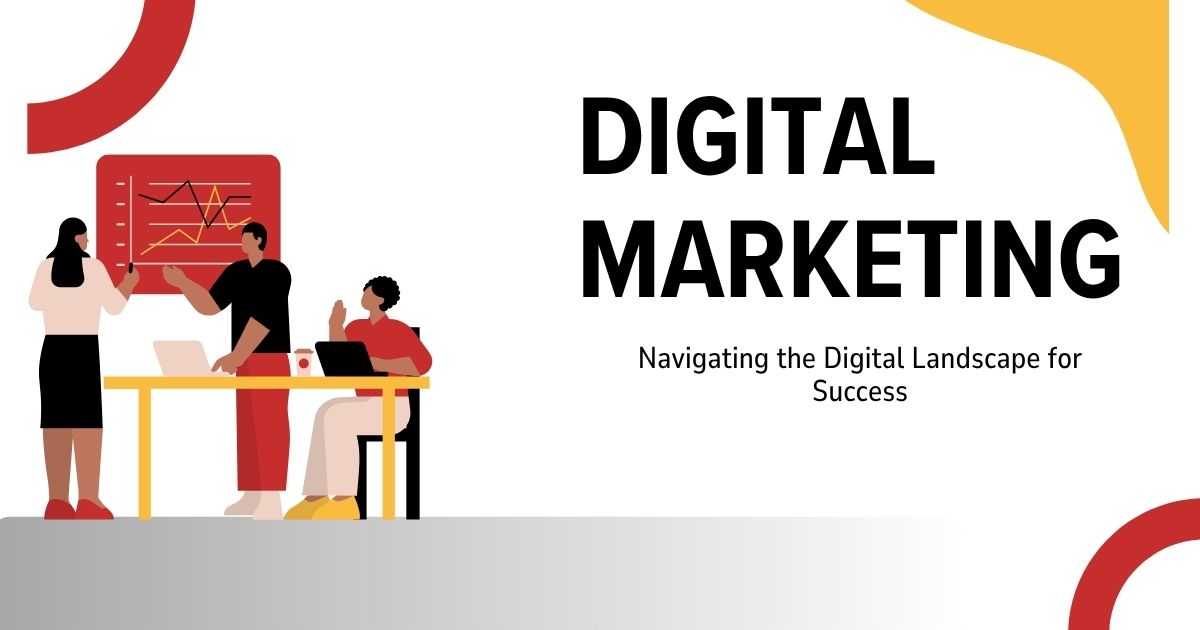
The financial services industry operates under unique challenges that other sectors rarely face. Strict regulations, complex products, and the need to build deep trust with customers make marketing in this space particularly demanding. Yet with the right digital marketing strategy, financial institutions can effectively reach their target audience while maintaining compliance and credibility.
Digital marketing offers financial services companies unprecedented opportunities to connect with customers, from personalized email campaigns to targeted social media advertising. However, success requires a thoughtful approach that balances promotional messaging with educational content, regulatory compliance with creative freedom, and brand awareness with lead generation.
This comprehensive guide will walk you through creating an effective digital marketing campaign specifically tailored for financial services companies, covering everything from initial strategy development to campaign optimization and performance measurement.
Understanding Your Financial Services Audience
Before launching any digital marketing campaign, financial services companies must develop a deep understanding of their target audience. Unlike other industries where purchasing decisions might be impulsive, financial services involve significant consideration periods and multiple decision-makers.
Financial services customers typically fall into distinct segments: young professionals seeking their first mortgage, established families planning for retirement, small business owners needing commercial loans, or high-net-worth individuals requiring wealth management services. Each segment has different pain points, communication preferences, and decision-making processes.
Research shows that 73% of consumers research financial products online before making contact with a provider. This means your digital marketing campaign must provide valuable information throughout the entire customer journey, from initial awareness to final decision-making.
Understanding the emotional aspects of financial decisions is equally important. Money management involves anxiety, hope, fear, and aspiration. Successful campaigns acknowledge these emotions while positioning your services as solutions that provide security, growth, and peace of mind.

Regulatory Compliance in Digital Marketing
Financial services marketing operates under strict regulatory oversight from bodies like the SEC, FINRA, and state banking commissions. These regulations directly impact how you can structure your digital marketing campaign for financial services companies.
All marketing materials must include appropriate disclaimers, risk disclosures, and compliance language. Social media posts, email campaigns, and digital advertisements must be archived and available for regulatory review. This requirement affects content creation workflows and approval processes.
Truth in advertising takes on heightened importance in financial services. Claims about returns, performance, or benefits must be substantiated and presented fairly. Testimonials and case studies require specific disclosures and may need customer consent for ongoing use.
Working with your legal and compliance teams from the campaign’s inception ensures all materials meet regulatory standards while still achieving marketing objectives. Many successful financial services companies establish pre-approved messaging frameworks that marketing teams can use to maintain compliance while maintaining agility.

Content Marketing Strategy for Trust Building
Content marketing forms the foundation of effective digital marketing campaigns for financial services companies. Educational content helps establish expertise, builds trust, and provides value to potential customers throughout their decision-making process.
Financial topics can seem intimidating to many consumers, creating opportunities for companies that can explain complex concepts in accessible language. Blog posts covering topics like “Understanding Mortgage Rate Calculations” or “Retirement Planning in Your 40s” attract qualified traffic while positioning your company as a trusted advisor.
Video content performs particularly well in financial services marketing. Explaining investment strategies through visual presentations or featuring real customers discussing their experiences helps humanize your brand and makes complex topics more approachable.
Webinars and online workshops provide opportunities for deeper engagement with qualified prospects. These formats allow for real-time questions and answers while demonstrating your team’s expertise. Recording these sessions creates additional content assets for future marketing efforts.
Case studies and success stories, when properly disclosed and compliant, provide social proof that helps prospects envision their own success. Focus on the problem-solving process and outcomes rather than just the results to create more compelling narratives.
Multi-Channel Digital Approach
Successful digital marketing campaigns for financial services companies typically employ multiple channels working in coordination rather than relying on single platforms. Each channel serves different purposes in the customer journey and reaches audiences at different stages of readiness.
Search engine marketing captures high-intent traffic from people actively researching financial services. Both organic SEO and paid search advertising help ensure visibility when prospects search for relevant terms. Long-tail keywords often prove more valuable than broad terms due to lower competition and higher conversion rates.
Social media marketing requires careful consideration of platform demographics and regulatory requirements. LinkedIn works well for B2B financial services and professional networking, while Facebook and Instagram can effectively reach consumer segments with educational content and brand awareness campaigns.
Email marketing remains highly effective for financial services, particularly for nurturing leads through longer sales cycles. Automated drip campaigns can deliver relevant content based on prospect interests and behaviors while maintaining regular touchpoints.
Retargeting campaigns help maintain visibility with website visitors who didn’t convert initially. Given the extended consideration periods common in financial services, staying top-of-mind through strategic retargeting often proves crucial for eventual conversion.
Personalization and Segmentation
Generic marketing messages rarely resonate with financial services prospects who have specific needs and circumstances. Effective digital marketing campaigns leverage data and technology to deliver personalized experiences that speak directly to individual prospect situations.
Demographic segmentation forms the starting point, but behavioral and psychographic data provides deeper insights for personalization. Website behavior, content engagement patterns, and interaction history help create more nuanced customer profiles.
Dynamic content allows websites and email campaigns to display different messages based on visitor characteristics. A young professional might see content about first-time homebuying, while someone nearing retirement sees information about wealth preservation strategies.
Progressive profiling through forms and interactions helps gather additional information over time without overwhelming prospects with lengthy initial forms. This approach builds more complete customer profiles while maintaining positive user experiences.
Marketing automation platforms enable sophisticated personalization at scale, automatically delivering relevant content and offers based on predetermined rules and triggers. This technology proves particularly valuable for managing the complex, multi-touch sales cycles common in financial services.
Measuring Campaign Performance
Digital marketing campaigns for financial services companies require comprehensive measurement strategies that go beyond basic metrics like clicks and impressions. The extended sales cycles and high customer lifetime values demand more sophisticated attribution models.
Lead quality metrics often prove more valuable than lead quantity in financial services. Tracking lead progression through sales stages helps identify which marketing channels and campaigns generate the most valuable prospects, not just the most volume.
Customer acquisition cost calculations must account for the full sales cycle length and all touchpoints. Many financial services companies find that campaigns with higher upfront costs but better lead quality ultimately provide superior return on investment.
Lifetime value tracking helps justify marketing investments and optimize budget allocation. Understanding which customer segments and acquisition channels produce the highest long-term value guides strategic decision-making and resource allocation.
Attribution modeling becomes complex when customers research for months before converting and interact with multiple touchpoints. Multi-touch attribution models provide better insights into campaign effectiveness than last-click attribution alone.
Optimizing for Long Sales Cycles
Financial services sales cycles often span months or even years, requiring digital marketing campaigns designed for extended engagement rather than quick conversions. This reality demands different optimization strategies than typical e-commerce or lead generation campaigns.
Nurture sequences must provide ongoing value while maintaining engagement over extended periods. Content calendars should include educational materials, industry insights, and helpful resources that keep prospects engaged even when they’re not actively shopping.
Remarketing lists require longer duration settings to account for extended decision-making periods. Campaigns should include messaging appropriate for different stages of the buying cycle, from early research to final decision-making.
Budget allocation should account for the extended timeline between initial engagement and final conversion. Many financial services companies find that consistent, moderate spending over longer periods outperforms aggressive short-term campaigns.
Patience with campaign optimization is essential, as meaningful conversion data may take months to accumulate. Focus on leading indicators like engagement rates, content downloads, and sales qualified leads rather than waiting only for final conversions.

Getting Started with Your Campaign
Creating an effective digital marketing campaign for a financial services company requires careful planning, regulatory awareness, and patience for results. Start by clearly defining your target audience and understanding their specific needs and challenges. Develop a content strategy that provides genuine value while positioning your expertise.
Ensure compliance frameworks are established before creating any marketing materials. Work closely with legal and compliance teams to create approved messaging guidelines and review processes that maintain regulatory adherence without stifling creativity.
Choose initial channels based on where your audience spends time and which platforms align with your budget and capabilities. Starting with a focused approach often proves more effective than spreading efforts across too many channels initially.
Implement proper tracking and attribution systems from the beginning to ensure accurate performance measurement. The complex nature of financial services sales cycles makes proper analytics setup crucial for understanding campaign effectiveness and optimizing performance over time.


Leave a Reply